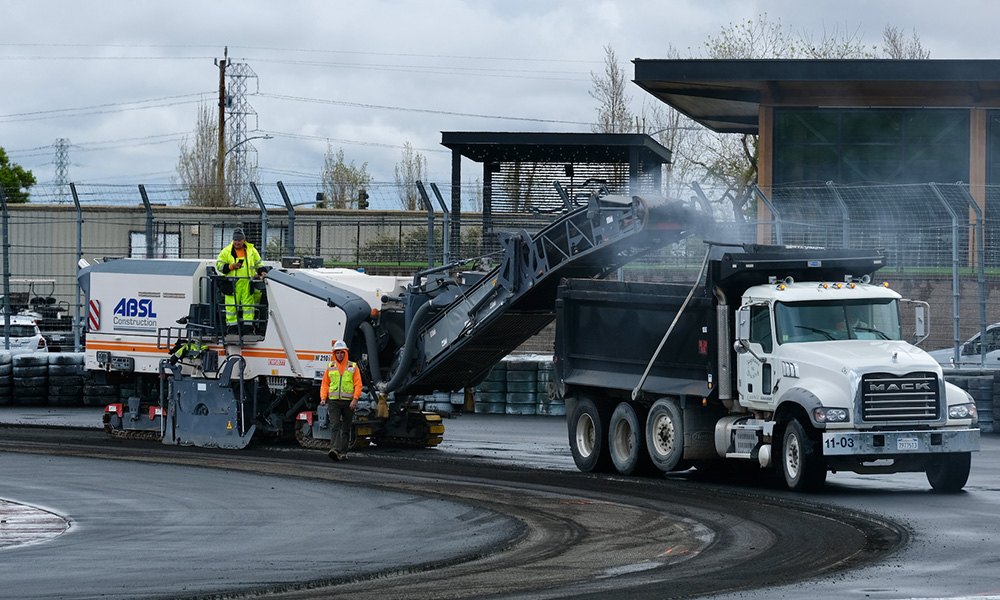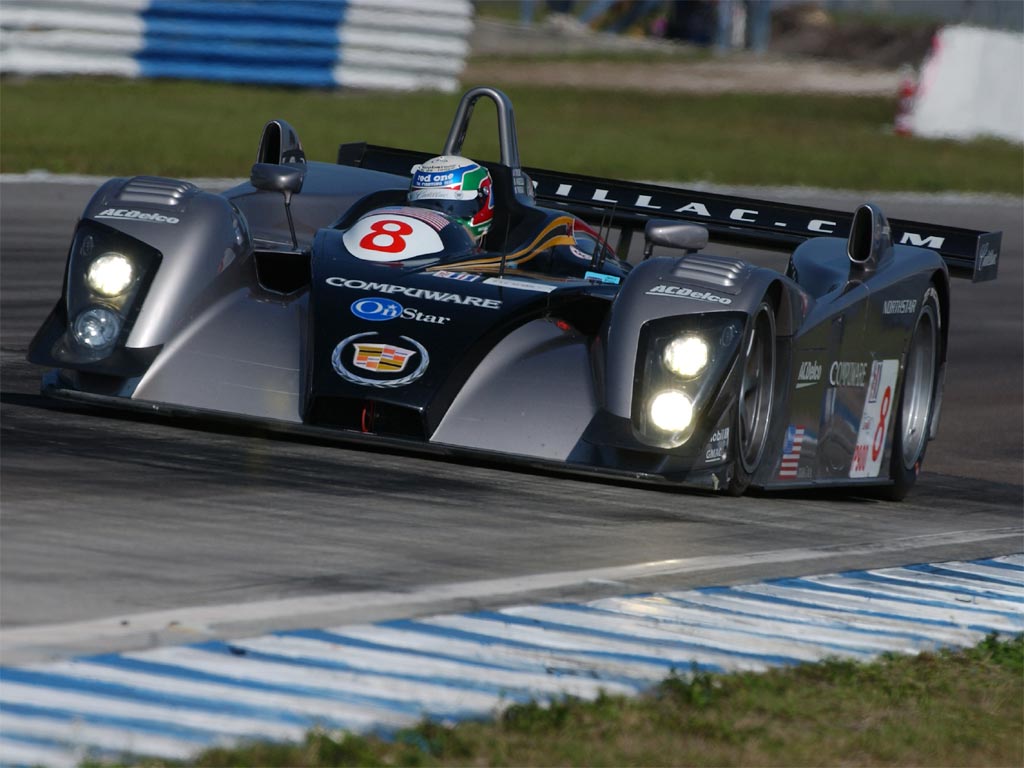- 353

- Italy
Like you correctly say, to a certain degree maybe yes, it belongs on this thread.Well that explains as much as is possible really. Maybe to a certain degree, the Saleen S7R belongs on this thread?
Like you correctly say, to a certain degree maybe yes, it belongs on this thread.Well that explains as much as is possible really. Maybe to a certain degree, the Saleen S7R belongs on this thread?
The S7R also won the first race it competed in, the 2001 Sebring 12 Hour. Which makes it unique in that it won its first race and last race.IIRC the ACEMCO team was often let's say "sloppy" in preparing the car, lots of oversights here and there. The car itself, on the other hand, often lacked reliability (I remember for example the Vitaphone Konrad team in the FIA GT, their Saleens were often fast but fragile, but also in the various national championships it often went like this), another proof of this lies in the only class victory at Le Mans obtained in the last edition in which the GT1s participated, again IIRC.
I hope RML believed in the car, considering they were the guys tasked with designing and building all of the S7Rs. It really was one of the first times that it was designed as a race car before the road car.And to think that when the Saleen S7R arrived in Europe it intimidated everyone, I remember that it was the RML (Ray Mallock) team who first believed in this car. Years later I have the feeling that he won less than his potential.
You know, recently I have been wondering, where does this thread stand on Motorsport endeavours that started off as failures but were more successful in the long run?Like you correctly say, to a certain degree maybe yes, it belongs on this thread.
With the current NGTC regs, it's hard to lay blame on any car in particular being a failure as success largely stems from how well a particular team pulls together the many 'spec' parts and develops the whole package. I imagine a good team can develop any car (that fits within the regs) to be a winner/contender with the right driver.You know, recently I have been wondering, where does this thread stand on Motorsport endeavours that started off as failures but were more successful in the long run?
I mean like the Infiniti Q50 in the British Touring Car Championship, from a solitary point with Support Our Paras Racing in 2015 to winning the title in 2020 and 2021 with Ash Sutton, for instance.
Kind of muddies the waters really.With the current NGTC regs, it's hard to lay blame on any car in particular being a failure as success largely stems from how well a particular team pulls together the many 'spec' parts and develops the whole package. I imagine a good team can develop any car (that fits within the regs) to be a winner/contender with the right driver.
I was there that year.IIRC the ACEMCO team was often let's say "sloppy" in preparing the car, lots of oversights here and there. The car itself, on the other hand, often lacked reliability (I remember for example the Vitaphone Konrad team in the FIA GT, their Saleens were often fast but fragile, but also in the various national championships it often went like this), another proof of this lies in the only class victory at Le Mans obtained in the last edition in which the GT1s participated, again IIRC.
Not bad at all! I'm impressed!I was there that year.
View attachment 1340661
I took this photo in the last hour of the race I think. Not bad for a 9 year old.
They cancelled the last year of the TS020 project because of f1...This whole Covid-19 thing made me revisit F1 races of the past decade since the current season is no-go, and it brought back memories of a team that perhaps wasn't exactly a failure, but more of an under achiever. Either way:
Toyota F1 (2002-2009)

13 podiums, 3 poles and 278.5 points in 140 GPs over 8 seasons. Respectable for a midfield, privateer team like Jordan or Arrows, but Toyota had a stratospheric 400+million budget/year, bigger than both Ferrari and McLaren (this was the West/Mercedes era, remember), and probably more than all the other teams combined. Toyota showed hints of brilliance here and there, most notably during the 2005 season where they finished 4th in the constructor championship... and then got beat by Williams, their customer team, in 2007. They sporadically scored points until 2009 where once more things looked promising in the early part of the season, only to ultimately pan out to nothing spectacular resulting in Toyota pulling the plug in November.
I remember my first Motorsport photo, but I wish I kept it. Had been waiting about 15 years of my life to go to Albert Park, and first practice session I went out to the straight after what was turns 11 and 12 and captured a beauty that looked similar to this:Not bad at all! I'm impressed!
Perhaps the TS020 would have finally won a race if it had continued into 2000...They cancelled the last year of the TS020 project because of f1...
De Cortanze told in an interview in French, that the TS020 was due to have a massive update for 2000, the study was over, and from his would have been a rocketship. Sadly it never came and he used all the studies from Toyota to make the Modification of the Courage C60 for Henri Pescarolo, from 2002.
If it wasn't for the Mercedes-Benz CLR hogging all the infamy, the 1999 Toyota GT-One would probably be remembered as a bit of a joke; three cars suffering three identical tyre failures that completely crippled the cars due to a design flaw. It was quick and competitive, sure, but it was a complete failure. Katayama was lucky to finish 2nd behind the superior and wrongly forgotten BMW.They cancelled the last year of the TS020 project because of f1...
Like the Mazda 787, i think it's the GranTurismo factor that's given it more fame then its results really reflect.If it wasn't for the Mercedes-Benz CLR hogging all the infamy, the 1999 Toyota GT-One would probably be remembered as a bit of a joke; three cars suffering three identical tyre failures that completely crippled the cars due to a design flaw. It was quick and competitive, sure, but it was a complete failure. Katayama was lucky to finish 2nd behind the superior and wrongly forgotten BMW.
In the only other race it competed in, the Fuji 1000, it lost to an inferior and even more obscure car - the Nissan R391.
It's very easy to say 20 years later "Oh we would have won next year, we had it all ready...".
Aside from winning Le Mans in 1991...Like the Mazda 787, i think it's the GranTurismo factor that's given it more fame then its results really reflect.
Because the other teams fell over themselves to not finish and because Mazda exploited a loophole that allowed them to run at 150kgs less than their rivals. The 787B was decidedly average apart from this one freak result.Aside from winning Le Mans in 1991...
Lamborghini Diablo GT500 enters chatLike the Mazda 787, i think it's the GranTurismo factor that's given it more fame then its results really reflect.
I was going to mention the Gran Turismo factor and obvious Japanese bias. It's going to be good there irrespective of actual real-life performance.Like the Mazda 787, i think it's the GranTurismo factor that's given it more fame then its results really reflect.
Yes, apart from that one freak result, the 787B never even finished in the Top 4 in the 1991 World Sportscar Championship.Because the other teams fell over themselves to not finish and because Mazda exploited a loophole that allowed them to run at 150kgs less than their rivals. The 787B was decidedly average apart from this one freak result.
The Jags that finished 2nd, 3rd and 4th behind the Mazda had qualified 7 or 8 seconds a lap quicker the previous year but had been effectively slapped with a 200kg penalty because of rule changes. The Mazda, which exploited a way around this was running at the same pace it had the year previously.
@Roflwaffle made a good video about it. Well worth the 40 minutes.However [the Diablo] was often the worst car in GT500 as it was more a passion project for JLOC to take an abandoned Diablo GT1 concept and take to the Japan GT Championship.
Much better than the Parnelli that Mario Andretti was originally contracted to be saddled with for the 1976 season.That one wasn't much better either.

 sportscar365.com
sportscar365.com
Reading your username, I was thinking... Can we remember the disappointing Cadillac LMP900 effort?Think we can add Sonoma's repave to the list, only finished a little over a month and the track is already falling apart.

SRO America Adjusts Weekend Schedule Amid Track Repairs – Sportscar365
Emergency track resurfacing at Sonoma Raceway to postpone most track activity to Saturday...sportscar365.com
Cadillac's LMP Program


Hot on the heels of BMW and Audi, GM decided to enter Cadillac at Le Mans to get a bit of worldwide exposure on the brand. The 2000 cars were built around an already dated Riley & Scott chassis, and were pretty much off the pace everywhere they raced. Best finish in 2000; a fourth place at Monza, and 19th at Le Mans. 2001 was much of the same, again evolving the R&S chassis, claiming as high as 3rd place at Mosport in the ALMS, and ultimately being classified 15th at Le Mans . The 2002 car was built in house and showed Cadillac was at least trying to take it seriously. 9th place at Le Mans, and a season high 2nd place at Miami showed there was potential for 2003, at which point GM killed off the program, saying it had met expectations and then focused on the Corvette program instead.
Reading your username, I was thinking... Can we remember the disappointing Cadillac LMP900 effort?
Project lasted only three years, with the LMP00 (2000), based on the Riley&Scott chassis, which then evolved into the LMP01 (2001) which however was erm, sooo much similar to the LMP00, and then arrived at the LMP02, a completely distorted car which, despite being much more aesthetically appealing, on paper it should also have been much more competitive and instead it wasn't really so.
GM pulled the plug at the end of 2002, in three years no victories, only five podiums (all obtained in the ALMS) and disappointing results at Le Mans which was the main target.
The 1984 Dallas GP springs to mind....Think we can add Sonoma's repave to the list, only finished a little over a month and the track is already falling apart.

SRO America Adjusts Weekend Schedule Amid Track Repairs – Sportscar365
Emergency track resurfacing at Sonoma Raceway to postpone most track activity to Saturday...sportscar365.com
Also 1985 Spa-Francorchamps GP...The 1984 Dallas GP springs to mind....
Not to forget Indycar should've raced on the 5 flat outside corners too but canceled it last minute.The Caesars Palace GP of 1981 and 1982. Let's race in a hotel car park! Great idea! NOT!
That looks even worse than the F1 circuit! Reminds me a bit of the Bahrain Outer Circuit that hosted the Sakhir GP in 2020.Not to forget Indycar should've raced on the 5 flat outside corners too but canceled it last minute.
View attachment 1344023
Except the Bahrain Outer Circuit was fantastic.That looks even worse than the F1 circuit! Reminds me a bit of the Bahrain Outer Circuit that hosted the Sakhir GP in 2020.
Not saying it wasn't fantastic because I agree. Just saying the Caesar's Palace Outer Circuit reminded me of it.Except the Bahrain Outer Circuit was fantastic.